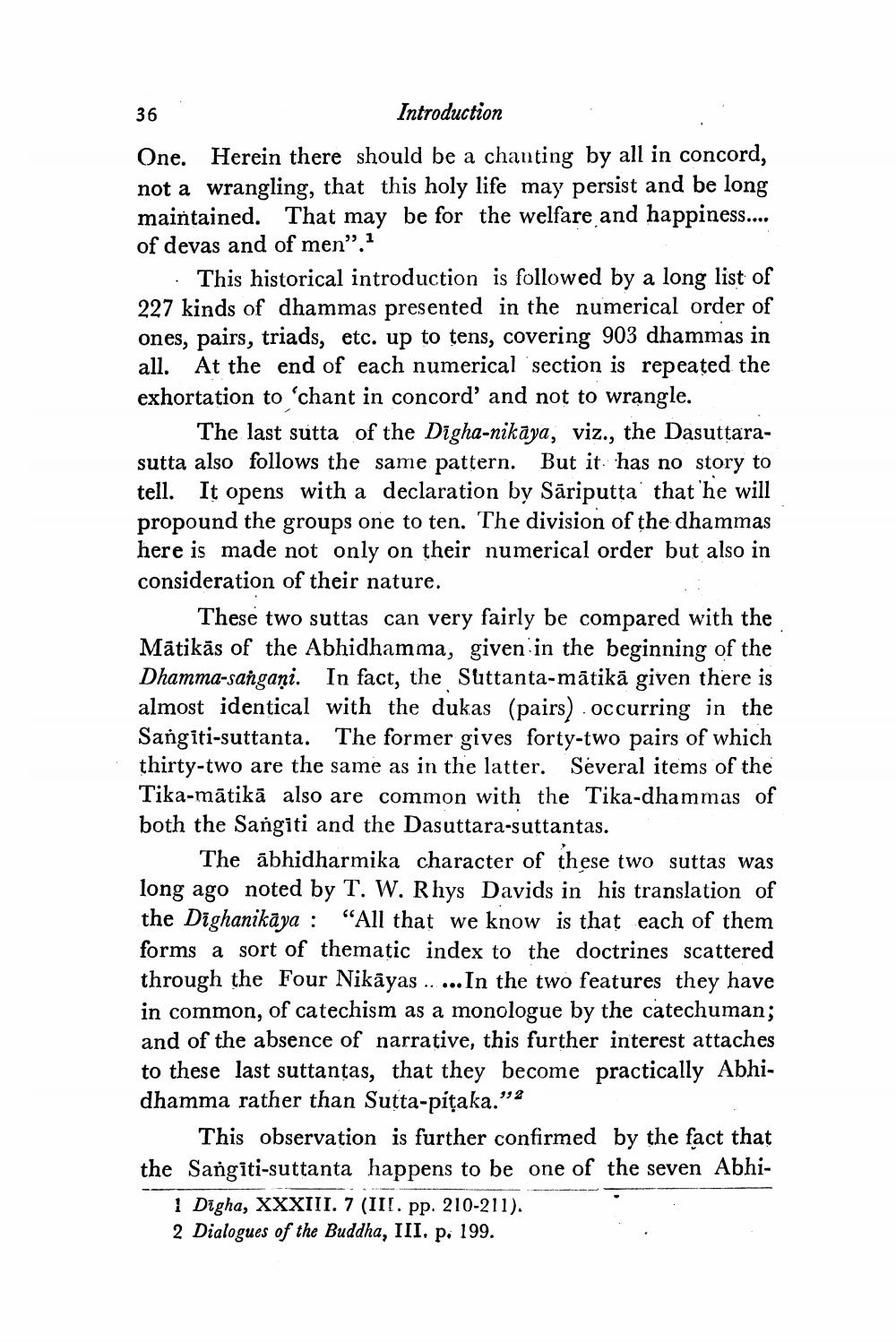________________ 36 Introduction One. Herein there should be a chanting by all in concord, not a wrangling, that this holy life may persist and be long maintained. That may be for the welfare and happiness.... of devas and of men".? * This historical introduction is followed by a long list of 227 kinds of dhammas presented in the numerical order of ones, pairs, triads, etc. up to tens, covering 903 dhammas in all. At the end of each numerical section is repeated the exhortation to 'chant in concord' and not to wrangle. The last sutta of the Digha-nikaya, viz., the Dasuttarasutta also follows the same pattern. But it has no story to tell. It opens with a declaration by Sariputta' that he will propound the groups one to ten. The division of the dhammas here is made not only on their numerical order but also in consideration of their nature. These two suttas can very fairly be compared with the Matikas of the Abhidhamma, given in the beginning of the Dhamma-sangani. In fact, the Suttanta-matika given there is almost identical with the dukas (pairs) . occurring in the Sangiti-suttanta. The former gives forty-two pairs of which thirty-two are the same as in the latter. Several items of the Tika-matika also are common with the Tika-dhammas of both the Sangiti and the Dasuttara-suttantas. The abhidharmika character of these two suttas was long ago noted by T. W. Rhys Davids in his translation of the Dighanikaya : "All that we know is that each of them forms a sort of thematic index to the doctrines scattered through the Four Nikayas ..... In the two features they have in common, of catechism as a monologue by the catechuman; and of the absence of narrative, this further interest attaches to these last suttantas, that they become practically Abhidhamma rather than Sutta-pitaka." This observation is further confirmed by the fact that the Sangiti-suttanta happens to be one of the seven Abhi 1 Digha, XXXIII. 7 (III. pp. 210-211). 2 Dialogues of the Buddha, III, p. 199.




